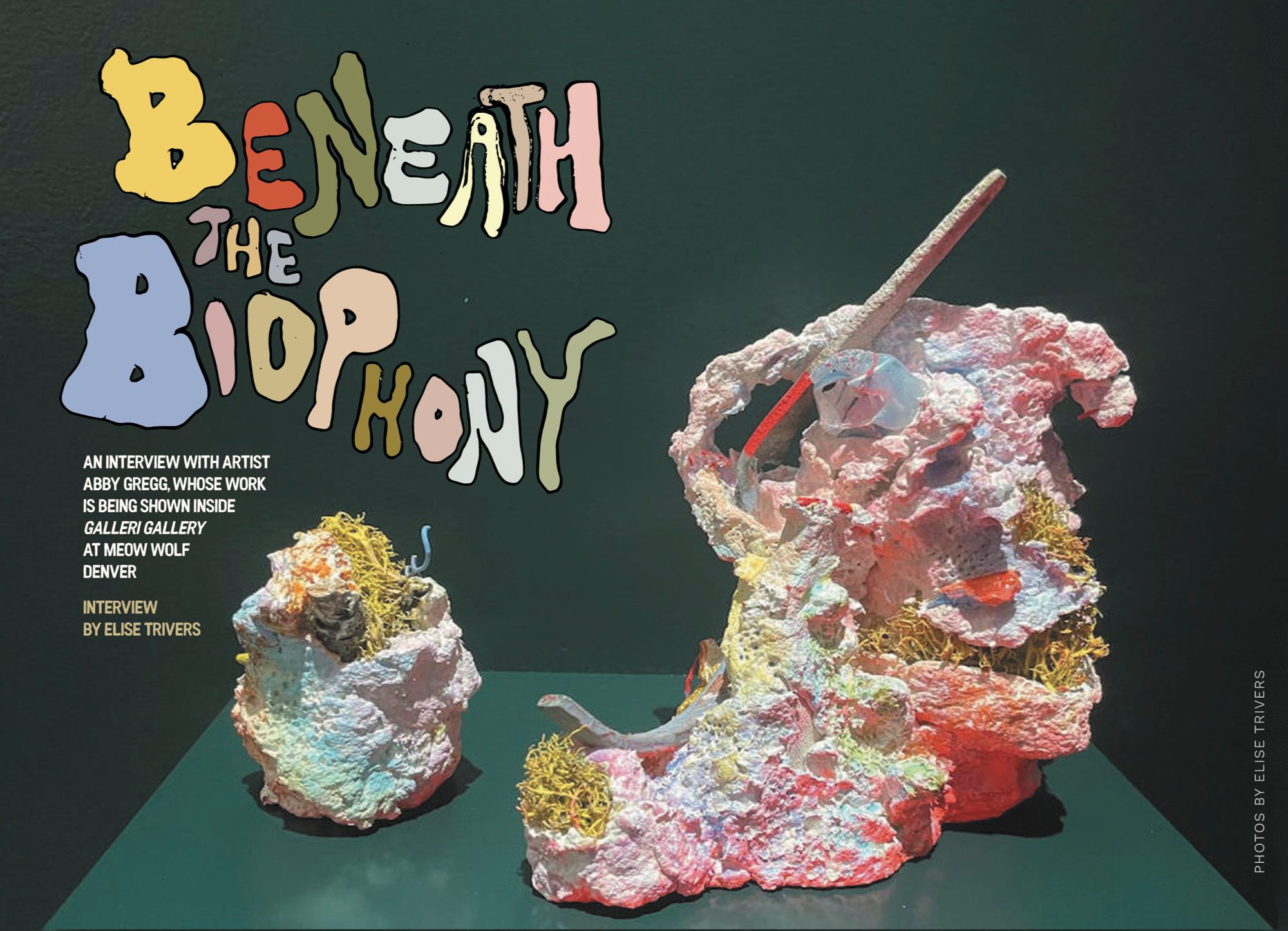 Published Issue 114, June 2023
Published Issue 114, June 2023
Nestled on C Street — between the fluorescent lights of the laundromat and the flickering candlelight of the mystic shop — is a door marked with neon glyphs. In English, they mean Galleri Gallery and welcome travelers to the functioning art gallery within Convergence Station.
Once inside Galleri Gallery, the bottle-green walls ground you into your surroundings and conjure an elaborate ecosystem. You are but one small being living in symbiosis with the colors and structures that surround you. Sculptures rest on platforms sprinkled throughout the space, ranging in size from a large hamster to a VOCS phone. Each one contains a thousand details, its coarse exterior softened by its playful, pastel hues. They appear as if someone has gently removed them from a cosmic tidepool, scientific samples for the intrepid and curious. Close examination brings forth elements like moss, paper, crystal shards and glitter.
These sculptures frame their painted counterparts on large-scale canvases, bringing the viewer deep into the habitat from which they came. Within these vibrant representations, there is movement, energy and symbiotic interactions. You become one of the creatures in this fantastical ecosystem -— intertwined within its story of resilience and marvel.
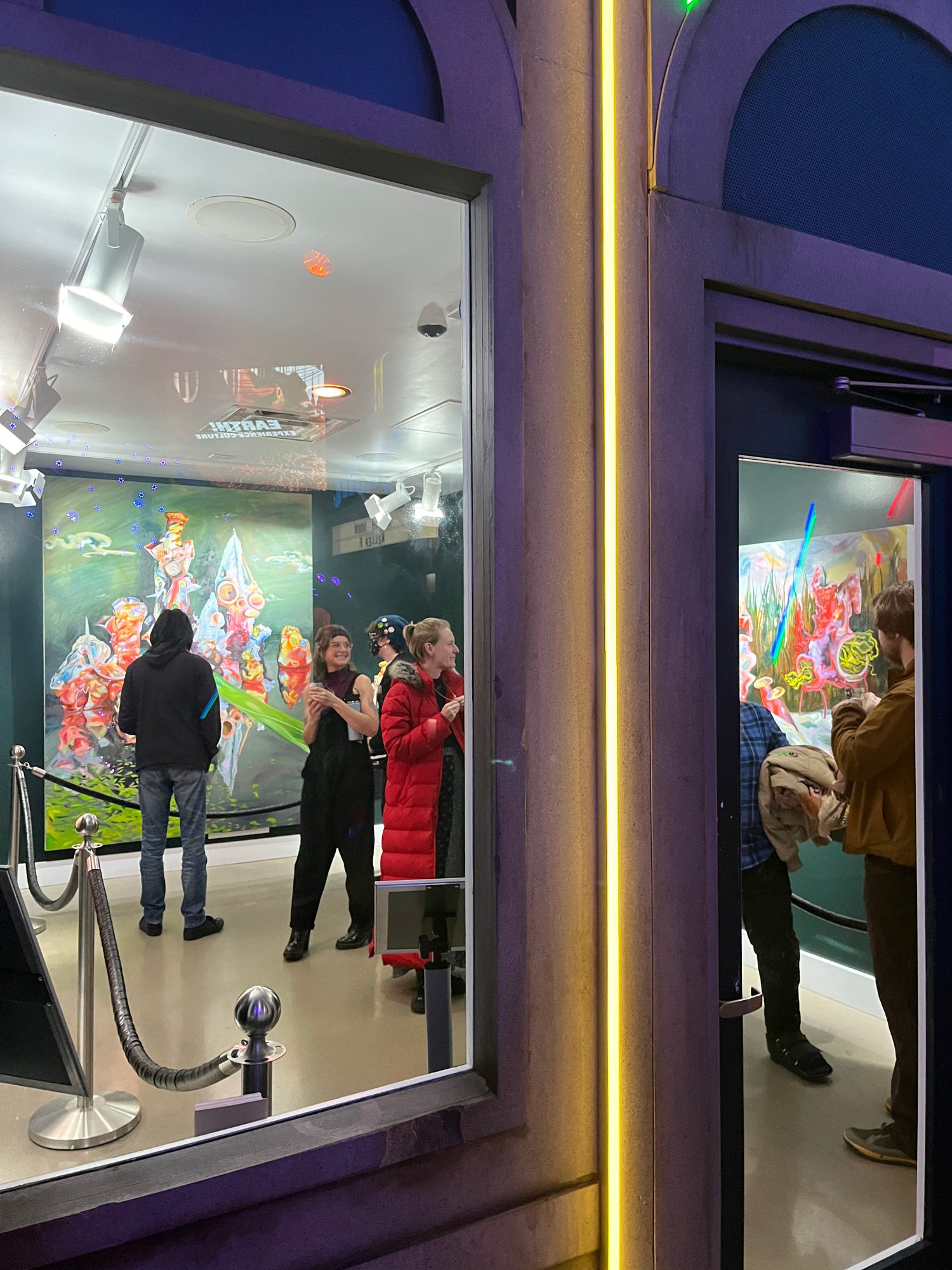
Beneath the Biophony
This intricate and imaginative biome is the work of Abby Gregg, an interdisciplinary artist based out of Denver. Beneath the Biophony includes paintings, sculptures and soundscapes that are imaginings of microscopic, amphibious and submerged unseen realms calling out with sparkling uncertainty and a vulnerable urgency. Imagery conjures narratives of treacherous, plastic landscapes reshaped by time and vivid decoration.
The title refers to the acoustic ecology of these imagined ecosystems. In a given biome, beings adjust the timbre of their communication to fit within the elaborate symphony of other creatures in their ecosystem. In these speculative ecosystems, beings live in symbiosis within living architecture. Drawing a parallel between human capacity and coral reefs, these narrative landscapes shelter, tend and interact with reciprocity.
We caught up with Abby and chatted about her identity as an artist, what the vibe at her studio is like, and our own precarious relationships to the natural environment.
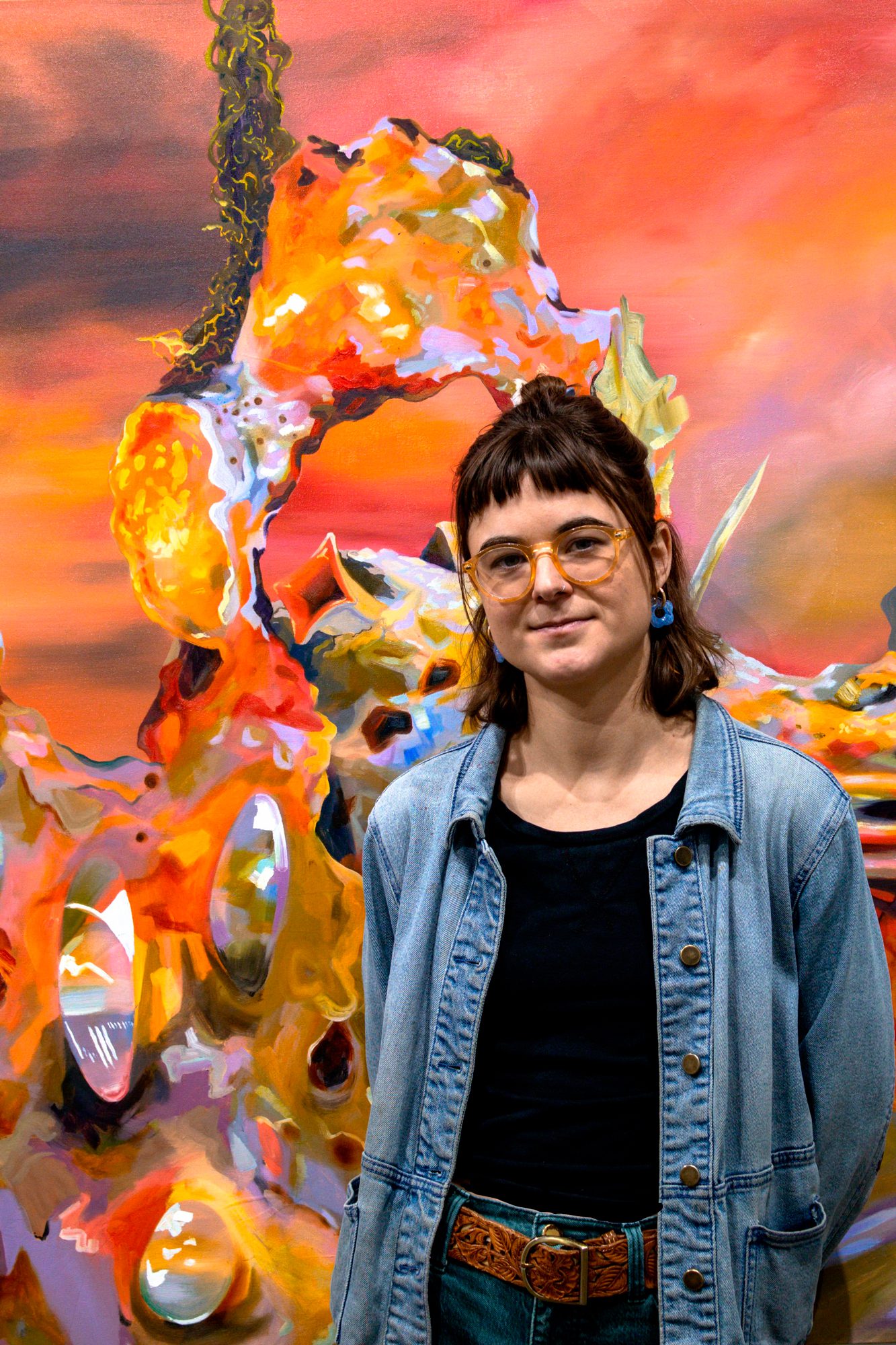
How did you get your start as an artist? What did your earliest days creating look like?
Being an artist has always been a huge part of who I am. Like most kids, I was always making and finding new ways to express myself. I was lucky enough to have family and community who always supported and nurtured this creative need I had. In every stage of my life I’ve stubbornly identified as an artist, and had a desire to share the magic possibilities of art-making with others.
Set the scene for us on what creating looks like now for you: What kind of music do you listen to? What kind of snacks do you have on hand? Do you prefer to be in a certain mood?
When I’m in the studio I feel most at home. Studio time is sacred. It’s a time for play and catharsis, problem-solving and working through everything that’s going on outside the studio. If my work doesn’t have heart in it, it’s no good … so I listen to music that helps me get in tune with how I feel and get into a playful and meditative state. Oftentimes I like listening to new music that I haven’t heard before, which makes each moment in the studio feel fresh. Occasionally, when I need an extra push to work through treacherous sections of my painting process, I need to dance around to Kate Bush or Fleetwood Mac. I have a box of chewy granola bars and cans of root beer in the studio to give me some extra fuel when I start to lose steam.
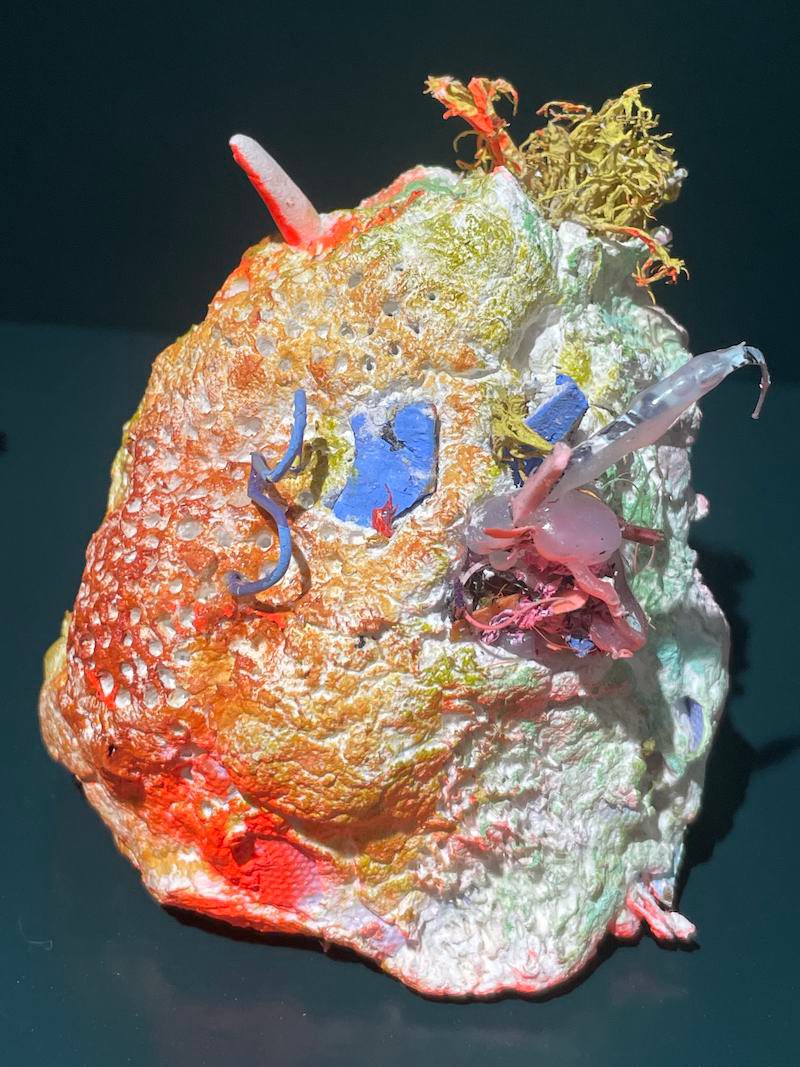
What mediums do you work with?
As an interdisciplinary artist, I am often working with different mediums for each given project, or sometimes have many different projects going at once. For acrylic painting processes I work with GOLDEN Fluid acrylic paint, heavy-body acrylic paint, and many acrylic mediums to alter my paint viscosities or to achieve different surface textures. Sometimes I apply my paint with a brush, a pour, a squeegee or an airbrush. Oil painting also plays a huge role in my practice, and for those processes I always have gloves, paint rags, Gamsol and oil painting mediums on hand. Other times I’m making sculptures out of found objects, paper-mache, clay, paper, etc., or creating music or soundscapes on my Korg Minilogue synthesizer.
Can you tell us more about how the themes of climate anxieties and resilient futures show up in your work?
My work is heavily inspired by the interconnectedness of ecosystems and our own precarious relationships to our environment. Worlds that are beneath the surface — vulnerable yet resilient — are massive inspirations. The ecosystems that I build in my artworks are open-ended narratives that allow me to grieve the dead and dying parts of our natural world while marveling at the resilience of our Earth’s ecosystems.
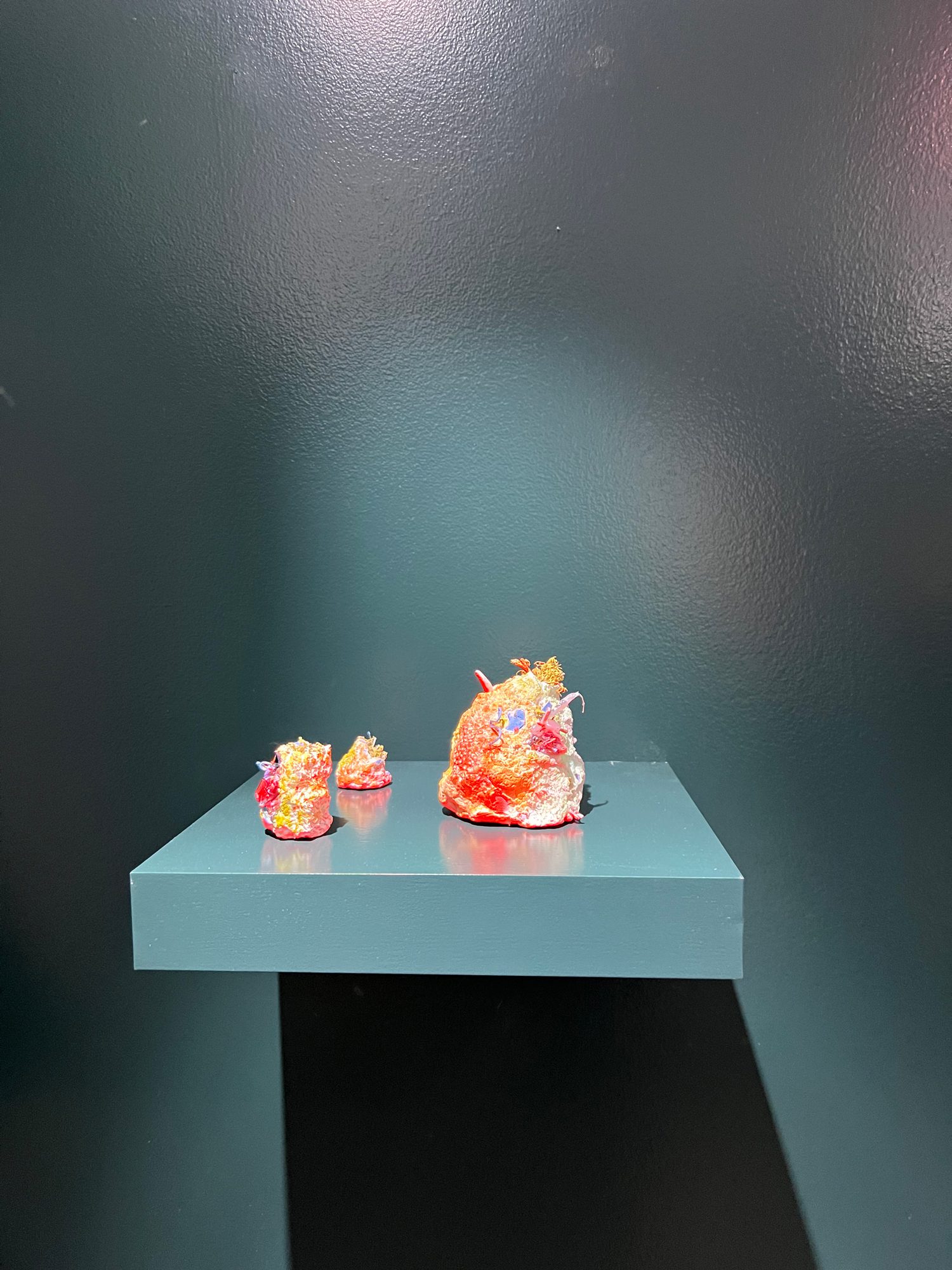
Are there other big themes that present themselves in your work?
I often explore metaphors in my work that allow me to think about possibilities for symbiosis and ideas of reciprocity. There are so many ways for us to imagine living in better relationship with our non-human relatives. For example, creatures like the decorator crab adorn themselves for survival, attaching living sponges to their backs for camouflage, and allowing the sponge to hitch a ride to collect a wider variety of nutrients. While I’m anthropomorphizing a bit, I see these crabs as a reminder that vibrant expression is critical to living in the turbulent waters of dystopia.
If there were no constraints, what’s a dream project you’d love to bring to life?
I would love to collaborate with ecologists to make site-specific work that’s inspired by specific relationships in a given ecosystem. I’m interested in merging science and imagination to allow us to convey big feelings of grief, wonder and interconnectedness while shedding light on the incredibly specific ways that beings relate to each other.
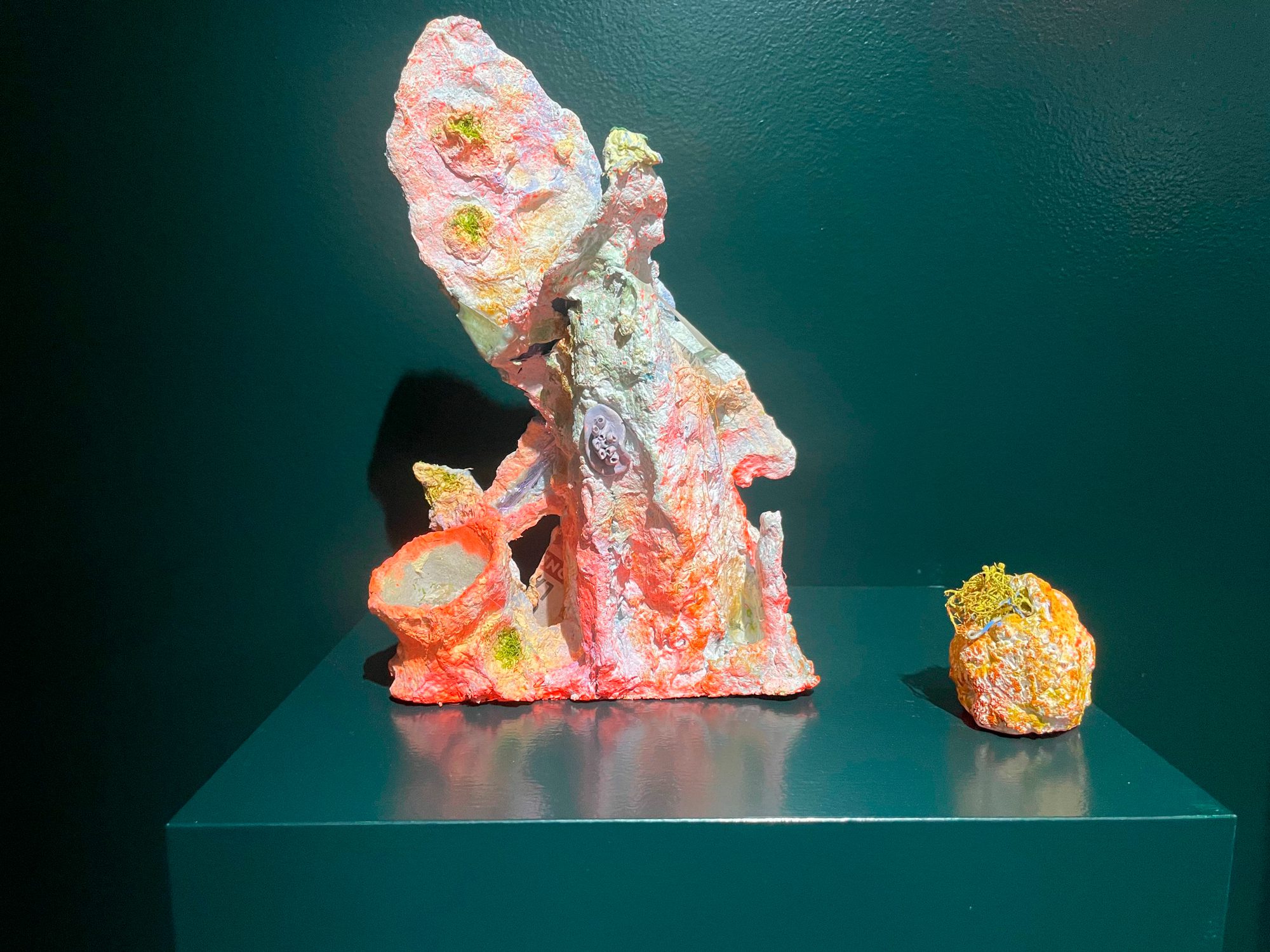
In relation to Beneath the Biophony, what was the inspiration behind this series of work?
Much of my inspiration for this body of work came from thinking about living architecture. Spaces that are also beings. Beings that are also homes. And thinking about how we’re home to trillions of microorganisms. Corals are animals that provide a home to entire ecosystems. Photosynthetic algae within them feed their corals in return for shelter. This relationship has me wondering what it might look like if we fed our home? What if we provided generative space for others?
Did you encounter any unique challenges in creating it?
Each painting is full of unexpected problems to solve but that’s the fun part. There’s something really special about the unique problems that present themselves throughout the process, no matter how much planning you do ahead of time. Often to solve a big visual problem, one has to make big, bold moves. Risk-taking is the only way to take a piece from its skeletal beginnings to a fully fleshed out world.
Any fun surprises?
If you look closely throughout the exhibition, you can see how each sculpture on the surrounding pedestals inspired the forms within my large-scale paintings. They’re kind of like characters that you can find in new contexts and narratives.
Do you have a favorite piece in the collection?
The piece Listen Closely is my favorite work in the collection because of how it feels narratively and because of the big risks I had to take to resolve this piece. Often the bigger the problem I solve, the more I appreciate the finished work.
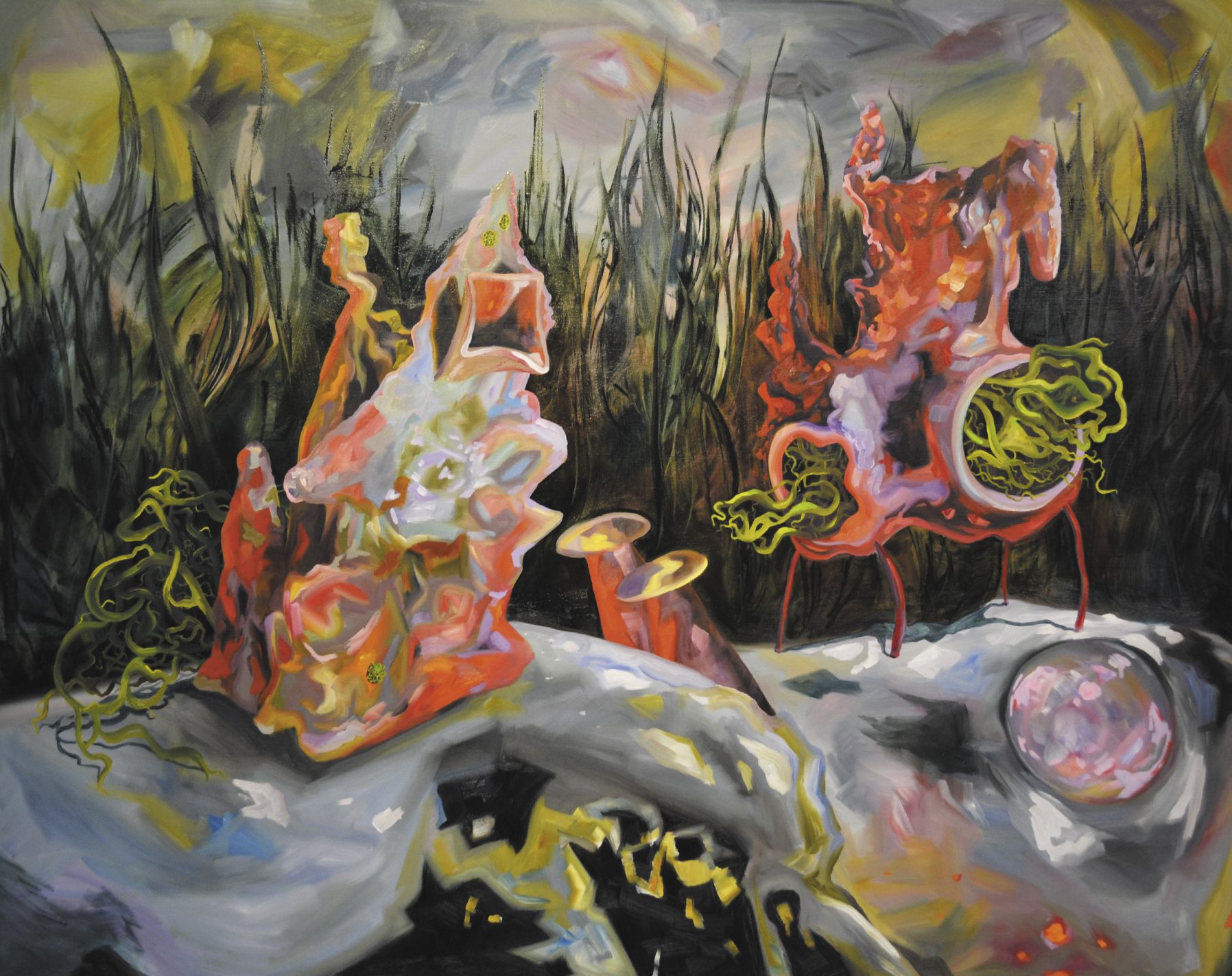
Is there a detail that you’d like people to notice?
I created a site-specific soundscape for the show titled Fossil Sounds which I’ll be releasing in the near future as an EP. When you visit the show, notice how you connect the sounds you hear to the process of visually “reading” the paintings and sculptures. Do you imagine the sounds emitting from the mouth of a certain rock-face or coral structure? Or ambient drones bubbling through mosses shimmying in the wind? I aimed to layer textures sonically in ways that relate to the illusions of depth and space in the paintings, creating an emotional space for solace and wonder.
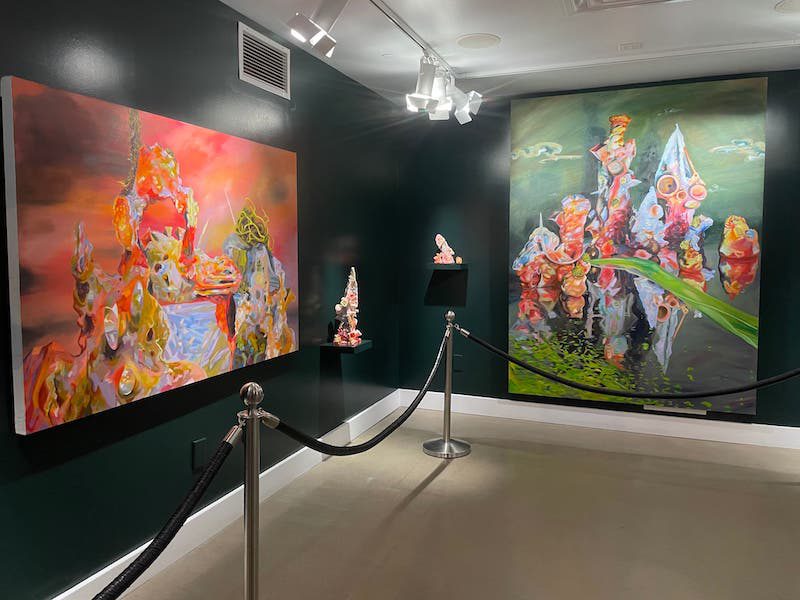
What do you hope people might think or feel when they experience the exhibition?
I hope people feel a sense of interconnectedness with their ecosystems — even the parts they can’t see. I hope people can feel empathy and care for these unseen ties. I hope people can process the grief of the toxic layers of our world while simultaneously experiencing wonder and radical whimsy.
Can you tell us a bit more about yourself outside of being an artist? What brings you joy? What types of environments do you like to spend time in? How do you de-stress?
I feel grounded and inspired by spending time outside. Sketching plants and animals from life while listening to the sounds of the natural world makes me happy. Making stuff and exploring with the incredibly creative, weird, and wonderful people and dogs in my life is truly my favorite thing.
Have you explored Convergence Station and if so, were there any projects or spaces that you particularly enjoyed? What was your first experience with Meow Wolf like?
Cal Duran and David Ocelotl Garcia’s collaborative space is so powerful in all its textural, colorful wonder. I’m in love with Nicole Banowetz’ massive inflatable bug-like creature, which sits caged beneath a stairwell. This creature is so playful and alive, and has a unique capacity for storytelling. My favorite thing about Meow Wolf Denver is seeing the incredibly unique voices of so many incredible artists come together.
About Abby Gregg:
Abby works primarily in painting, sculpture, and sound to build imagined ecosystems that explore the tension between aquatic, cavernous, or microscopic realms and toxic accumulation. Abby currently teaches painting at the University of Colorado, Denver. She completed an MFA in Studio Arts at the San Francisco Art Institute, and a BFA in Painting and Art Education from the University of Georgia. She completed an artist residency at the Children’s Museum of Denver, and has exhibited at Pirate Contemporary Art (Denver), Emmanuel Gallery (Denver), The Center for Visual Arts (Denver), NIAD Art Center (Oakland), SOMArts (San Francisco), Diego Rivera Gallery (San Francisco) and other spaces. Abby will be relocating to Atlanta this summer to continue her art and teaching practices.
Get tickets to Convergence Station to see Beneath the Biophony and more.
In case you missed it, check out May install by Quinn Fati, Artists & Mental Health Practices, or head to our Explore section to see more pieces in collaboration with Meow Wolf.

Pingback: Searching for the Psychic Shop at Denver Meow Wolf by Elise Trivers - BIRDY MAGAZINE